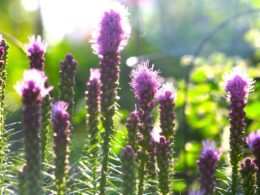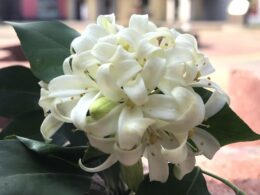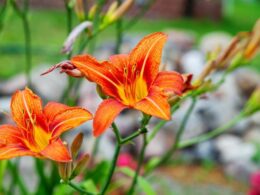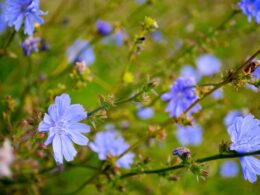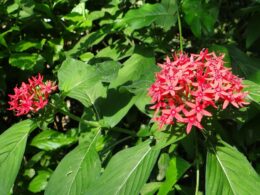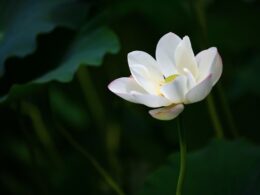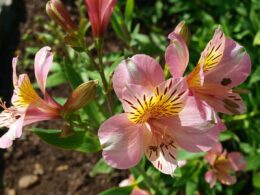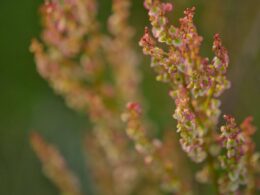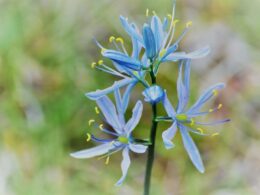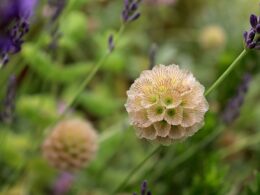Datura Flower Appearance
The datura flower is a beautiful but potentially dangerous plant. Datura is also known as jimson weed, devil’s trumpet, thornapples, hell’s bells or moonflower. Datura is a member of the nightshade family Solanaceae and the genus Datura.
Datura plants are characterized by their large, fragrant flowers and spiny fruits. It is a beautiful, yet somewhat eerie-looking bloom. It is large and trumpet-shaped, and can be white, cream, yellow, pink, or purple in color. The petals of the datura flower are often fused together, giving the bloom a trumpet-like shape. The flower size can range from about 1.5 to 4.7 inches in diameter and about 2 to 7.8 inches in length.
Datura Flower Habitat and Distribution
It is found throughout the United States, except for the North and West. The flower is most common in the Southern states.
Datura Flower Species
All species of Datura are herbaceous annuals, and they are often grown as ornamentals. The most well-known member of this genus is Datura stramonium, which is also known as jimson weed. Here are other species of datura flowers.
- Datura arenicola (Baja datura is a common name);
- Datura lanosa;
- Datura reburra;
- Datura kymatocarpa;
- Datura ceratocaula: also called torna loco or swamp datura, it’s found mostly in Mexico;
- Datura innoxia: considered a weed;
- Datura ferox: found in China;
- Datura metel: known as Hindu datura;
- Datura pruinosa;
- Datura discolor: found in Sonoran Desert;
- Datura leichhardtii: growing mainly in Mexico and Guatemala;
- Datura quercifolia: found in Mexico and western United States;
- Datura wrightii: also called sacred datura or western jimsonweed, native to Southwestern United States.
Datura Flower Cultivation and Growing Conditions
The datura flower, also known as jimsonweed, is a beautiful but potentially dangerous plant. All parts of the plant contain atropine, scopolamine, and hyoscyamine, which can cause hallucinations and delirium if ingested in large quantities. The seeds are especially potent, and just a few can cause serious health problems.
For this reason, it is important to exercise caution if you choose to cultivate datura flowers. While the plant can add a touch of elegance to any garden, it is important to keep it out of reach of children and pets. With proper care, you can enjoy the beauty of the datura flower without exposing yourself or your loved ones to its dangers.
Soil Type
The ideal soil for a datura plant is a humus-rich loam that is evenly moist. This type of soil allows the roots to spread easily and provides adequate drainage while still retaining enough moisture to keep the plant healthy. Additionally, the soil should be loose and crumbly, so that the datura’s large flowers have room to grow without being cramped.
Water Requirements
While the datura flower is tolerant to various conditions, it does require regular watering in order to thrive. Ideally, the soil should be moistened every couple of days, either through natural rainfall or irrigation. However, it is important to avoid overwatering, as this can lead to fungal growth and other problems.
Is the Datura Flower Invasive?
Some species of datura plants are considered invasive, especially in areas where they are not native. In general, datura plants can spread rapidly and outcompete other plants for resources, leading to decreased biodiversity in an ecosystem.
Datura can easily reseed itself and spread through vegetative means as well, making it difficult to control once it has become established in an area. Eradication efforts may be necessary in order to prevent further spread of this plant. However, not all species of datura are considered invasive. Some varieties are actually quite rare.
The Dangers of Datura Flowers
The datura flower is a beautiful, but potentially dangerous plant. All parts of the plant contain toxic alkaloids that can cause serious health problems if ingested. The flowers are especially dangerous because they are so beautiful and fragrant that children or pets may be tempted to try them.
Datura Flower Poisoning
The datura flower is a beautiful, but deadly, plant. All parts of the plant are poisonous, and ingestion of even a small amount can be fatal. The datura flower contains high levels of toxins that can cause hallucinations, delirium, and even death.
Symptoms of datura toxicity include:
- hallucinations;
- delirium;
- unconsciousness;
- seizures;
- coma;
- death.
Treatment for datura poisoning is primarily supportive, and may include IV fluids and close monitoring. There is no specific antidote, so treatment focuses on managing symptoms and supporting vital functions.
Datura Flower Psychoactive Uses
The datura flower has long been associated with both poison and magic. The plant contains a number of toxic alkaloids, including scopolamine and atropine. These substances block the action of the neurotransmitter acetylcholine, causing a wide range of neurological symptoms. If you suspect that someone has ingested any part of a datura plant, call poison control immediately.









